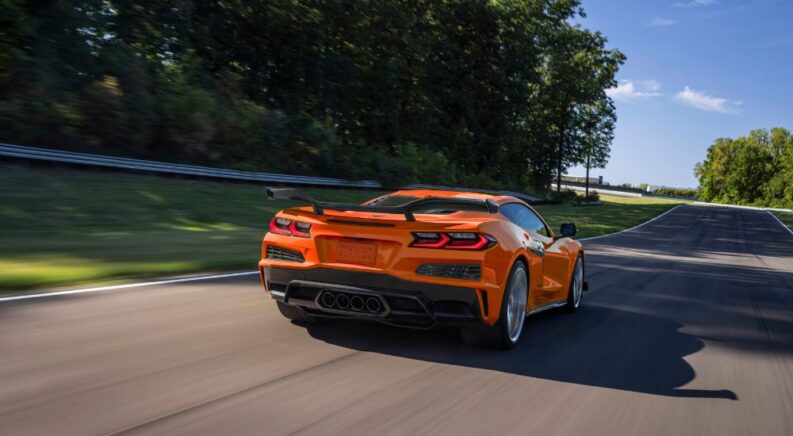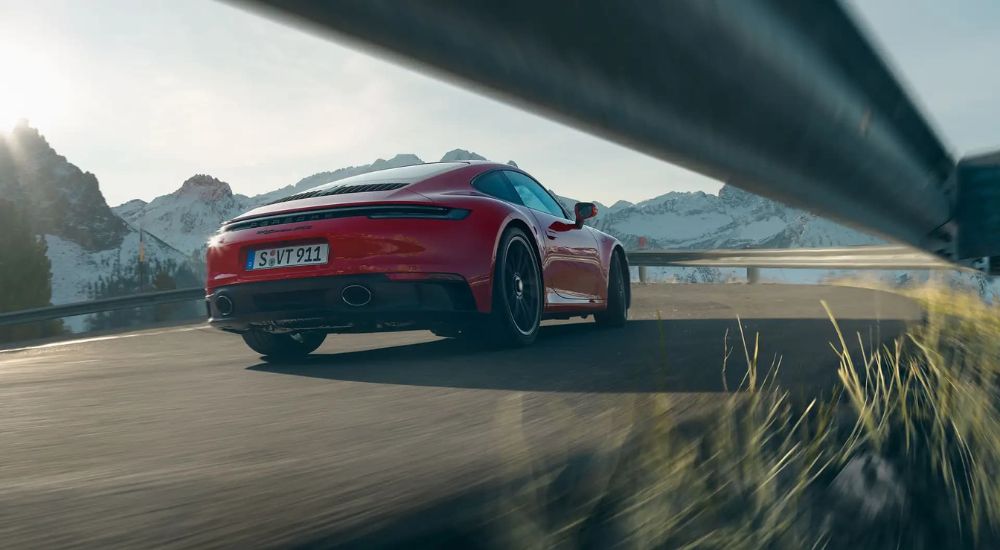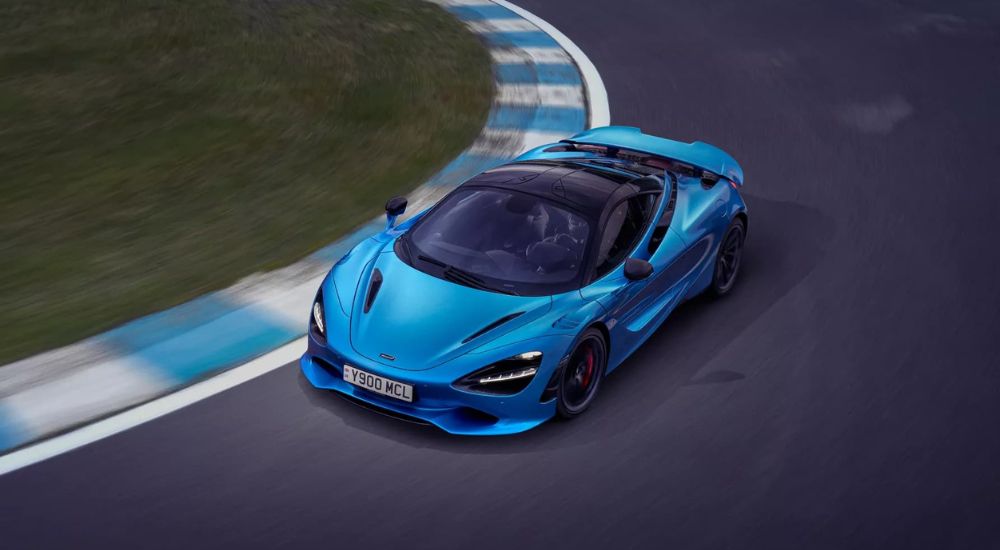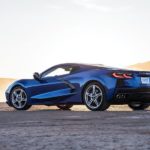There’s little doubt the eighth-generation Chevy Corvette Stingray is the most powerful, best-handling Corvette ever produced. The culmination of more than seventy years of research, development, and open-road thrills, this all-American machine is beloved by critics and enthusiasts alike.
Over the decades, the Corvette has evolved from a basic roadster to a coupe that screams performance—not just from the specs, but from the looks. The C8 redesign of 2020 makes it look more exotic than ever. When you walk into a local Chevy dealer, this Corvette’s sharp aerodynamics, side air scoops, and aggressive nose will remind you of the world’s finest supercars.
Does the C8 Corvette drive like the supercars it’s styled after? And even if it doesn’t quite match them in terms of performance, is that a big deal? I decided to compare the C8 Corvette to four other modern supercars to see how it measures up…
The Porsche 911 Carrera GTS
The Porsche 911 nameplate is arguably just as legendary as the Corvette, and there is no shortage of 911 variants to choose from, like the 911 Targa, Turbo, Dakar, and GT3. Some are a big step ahead of the Stingray, such as the Porsche 911 Turbo S with its 640-hp engine and 2.3-second time in a zero-to-sixty sprint. Lower-level trims like the 911 Carrera, on the other hand, lag behind the Corvette in many metrics.
For my money, the closest Porsche in terms of performance is the 911 Carrera GTS. It offers the most tuned-up version of the 3.0L twin-turbo V6 used for most 911 models, generating 473 hp and 420 lb-ft of torque. Although that’s slightly less than the 490 hp and 465 lb-ft of torque in the C8 Corvette Stingray (495 and 470, respectively, with the ZR1 package), the 911 Carrera GTS gets off the line a little faster: it flies from zero to sixty in a factory-claimed 3.2 seconds (and 3.1 seconds for the Carrera 4 GTS) versus the Stingray’s still-nothing-to-sneeze-at 3.3 seconds.
With the 911 Carrera GTS, you get two key features the C8 Stingray doesn’t have: optional all-wheel drive (AWD) and a manual transmission. Between this and the shorter wheelbase, the Porsche will turn a little tighter with more driver control, even on slick surfaces. The Corvette’s adaptive suspension is a win for all-around driving, though, as some drivers have reported the 911 Carrera GTS can be a bit stiff for city roads. When you consider the lowest C8 Stingray trim has an MSRP of $68,300, and the 911 Carrera GTS begins at $150,900, you’d be paying less than half as much for a comparable car.
The Lamborghini Revuelto
The newest vehicle in the Lamborghini lineup, the Revuelto, was unveiled in 2023 to replace the Aventador, which had been their flagship supercar for the past twelve years. Named for an 1880s fighting bull, it’s easy to whip the Revuelto into a calm rage. This hybrid has a 6.5L V12 and a trio of electric motors that buck up to 1,001 hp and 739 lb-ft of torque. Yes, you read that right. Its engine alone generates 814 hp; the closest the Corvette gets to this is from the Z06 track car that has 670 hp.
Furthermore, as great as the Stingray drives, there’s just something about the Revuelto when you get it on a track. No matter how technical the turns, or how much slope there is on the straightway, this machine is as smooth as can be. The chassis is lighter and stiffer than the Aventador, and the array of tech includes an active rear wing that adjusts to the driving modes. It’s been referred to as the Lamborghini wherein brains meet brawn.
The C8 Corvette is certainly no slouch, with the available Z51 performance suspension that includes vehicle lowering and Magnetic Selective Ride Control. It also has a fighter-jet-like control center. We wouldn’t blame you, though, if you were smitten by the Lamborghini Revuelto after a track test; then again, it retails for more than $600,000, whereas the C8 Corvette Z06 tops out at $130,650—so, while your heart may love the Revuelto, it will take a boatload more shekels to own one.
The Ferrari 296 GTB/GTS
Hybrids are becoming increasingly common in the supercar world, and the Ferrari 296 is one of the latest to join the club. Whether you choose the GTB hardtop coupe or the GTS convertible, this V6 hybrid lives up to the Ferrari pedigree by being powerful and fun while adding an eco-friendly touch. Plug-in technology certainly hasn’t slowed it down, as Winward Racing piloted the Ferrari 296 GT3 to victory in the 2024 Rolex 24 at Daytona, showcasing just how super it is on the track.
Surprisingly, though, the new hybrid version of the C8 Corvette puts up a pretty good fight. The engine and electric motor on the E-Ray generate 655 hp and 595 lb-ft of torque; it’s not the combined 818 hp and 778 lb-ft of the Ferrari 296, but it’s certainly enough to feel a surge. The E-Ray can blast from zero to sixty in 2.5 seconds, and with the electric motor powering the front wheels, it finally gives us an AWD Corvette. The Ferrari does have a cool Side Slip Control system to adjust front/rear grip in real-time, but otherwise, the tech and suspension are remarkably similar.
And as we’re seeing, you can’t beat the price of the Corvette E-Ray. It starts at $104,900 for the hardtop and $111,900 for the convertible. Meanwhile, the Ferrari 296 is more than three times that with an introductory MSRP of $342,205. This is another case of getting 80-90% of the performance for a fraction of the cost.
The McLaren 750S
Finally, we have the new McLaren 750S, which replaced the outgoing 720S in 2023. Expected to be the final McLaren that runs on gas only, it shares a certain bond with the C8 Corvette Stingray and Z06, with the E-Ray indicating their days might be numbered, too. More than a facelift, though, it’s making sure that internal combustion McLarens go out with a bang, with its design and technology based on the company’s Formula 1 efforts.
Like the McLaren 720S, the 750S is named for how much power it has: 750 Pferdestärke (PS), which converts to 740 hp (in addition to 590 lb-ft of torque). It’s 66 lbs lighter than the 720S, too, with a shorter final-drive ratio, letting you go from zero to sixty in 2.7 seconds. McLaren has given it quicker steering for turning on a dime, bigger air intakes to keep the engine cool, a bigger wing to maintain cornering speed, and even a sweet muffler-free exhaust note so it sounds like a race car.
All of that comes at a price, of course. The base MSRP on the 2024 McLaren 750S is $331,470 for the coupe and $352,740 for the Spider convertible. If you want a pure gas-powered performance coupe but don’t have three-plus bricks lying around, the C8 Corvette Z06 might be your speed. Its 670-hp engine gets you from zero to sixty a tenth of a second faster than the McLaren 750S, and you can bump things up to the Z07 suspension with Performance Traction Management and a damping system that adapts in milliseconds. All that starts at $110,100 for the hardtop and $117,100 for the ragtop.
A Fine Car at a Super Price
The Corvette stands as one of the most famous American cars ever produced. In a 75th anniversary MotorTrend reader poll, voters chose it as the most iconic vehicle since the magazine began publication, beating out fellow legends like the Ford Mustang, BMW 3 Series, Jeep Wrangler, and, yes, the Porsche 911. The C8 has come a long way from the original roadster, making itself a player among people who demand premium high-end performance.
Is the C8 Corvette a true supercar? Well, it’s at least in the conversation! There are undoubtedly other cars out there that offer a little more in terms of top speed, acceleration, and track-ready handling, but when you factor in the price point, the C8 Stingray is a far more accessible way to enjoy a little supercar flavor. Getting everything a Corvette offers at a fraction of the cost of a comparable McLaren, Lamborghini, or Ferrari feels like a win to me, and that kind of accessibility is yet one more reason why the Corvette has remained a legend.






